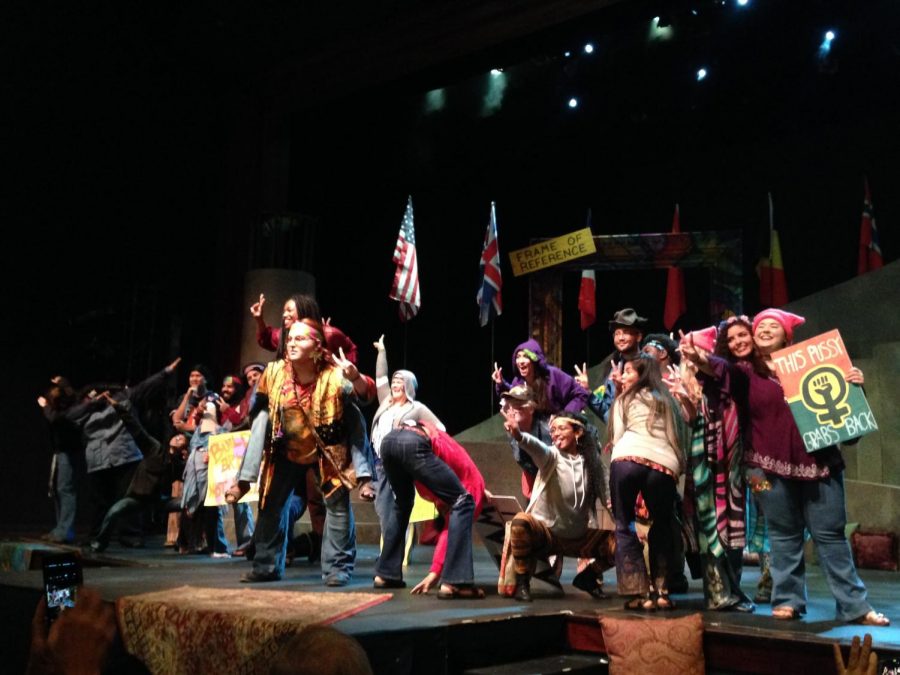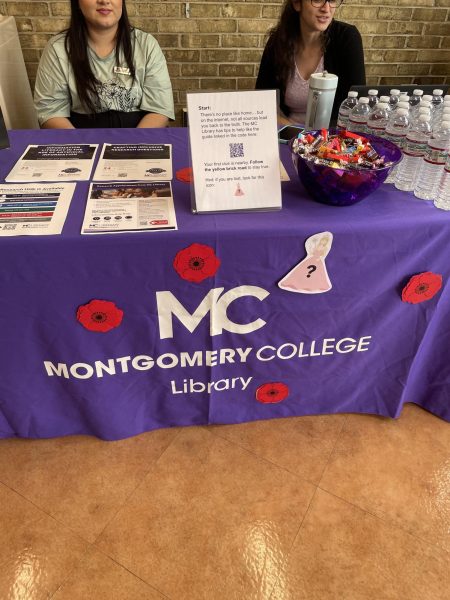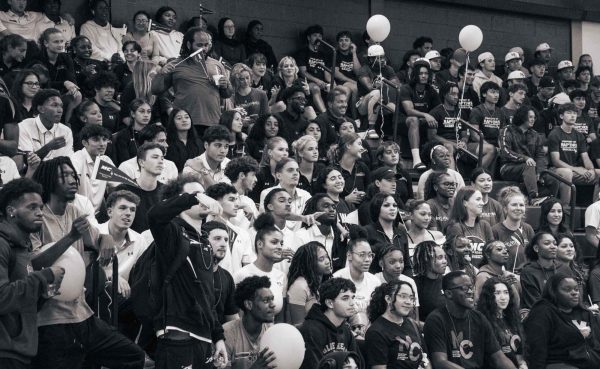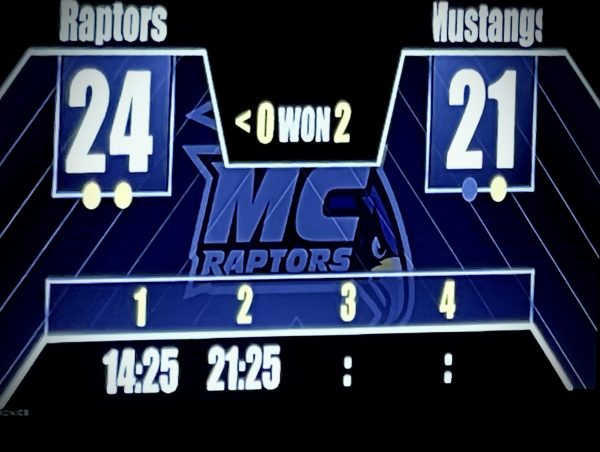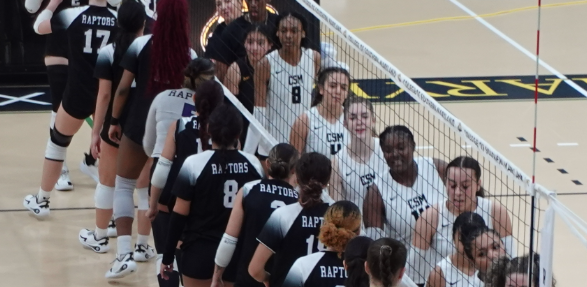HAIR The Musical
Contrary to what many may think, the Robert E. Parilla Performing Arts Center is not always empty. In October, a cast of 22 directed by Dennis Mulligan put on a production of the musical HAIR.
Originally on Broadway from 1968 to 1972, the musical is a psychedelic trip to Flushing, New York, where a group of long-haired hippies (referred to as the Tribe) shares their beliefs about the Vietnam war, drug use, the sexual revolution, and more with the audience.
Claude, played by Patrick Atilano, is the leader of the tribe. At the beginning of the story, he receives notice that he has been drafted to fight in the Vietnam War, and throughout the play, he struggles to reconcile his duty to his country with his beliefs in peace, as well as the bodily danger it would put him in.
Other members of the tribe include Berger (Michael Bayerle), Woof (Geraden Ward), Hud (Kenny Rodriguez), and Sheila (Samantha Shoop), among others. A unique element of the production was that every member of the cast had a moment to shine; the ensemble members did not merely serve to back up the leads but truly and fully participated as part of the tribe.
All of the tribe members dressed in very bright colors and typical “hippie” clothing, such as headbands, embroidered bell-bottom jeans, a long tasseled vest, and flowing dresses. Claude wore a bright red jacket. And of course, everyone had long hair.
The music for the show switched between fast, upbeat numbers, and slower and sultry songs. Occasionally thoughtful and often satirical, the tribe members use every song to glorify drug use and free love and criticize topics such as pollution, racism, and war.
The set of this production was a war monument, which included two towers as high as the rafters of the stage and a large curved piece containing a lot of stairs. Taking up center stage was a huge picture frame labeled “Frame of Reference.”
Madlené Nel, who performed as one of the tribe members, said that the show was different from shows she had done in the past. One lesson she learned in the process of preparing for the show was that in the end, everything comes down to love, whether you’re in love, giving love, fearing love, or perhaps taking away love.
Overall, the performance was loud, brazen and brave. Underneath the flagrant expression of the tribe members’ beliefs were a demand for change and a challenge to the status quo.
The director of this production chose to connect the themes in the show to today by focusing on exhorting the audience to vote ahead of the midterm elections. The cast frequently exited the stage to interact with the audience directly, and one instance of this was at the end of the show during the number “Let the Sunshine In,” where they handed out fliers for MC’s Party to the Polls event.
“I was surprised at how much it’s relevant to today,” said Kate Berman, an audience member. She remembers when the show first came out in the 70s and was excited to see it again. “It doesn’t matter how old it is; that’s the beautiful thing about theater.”


